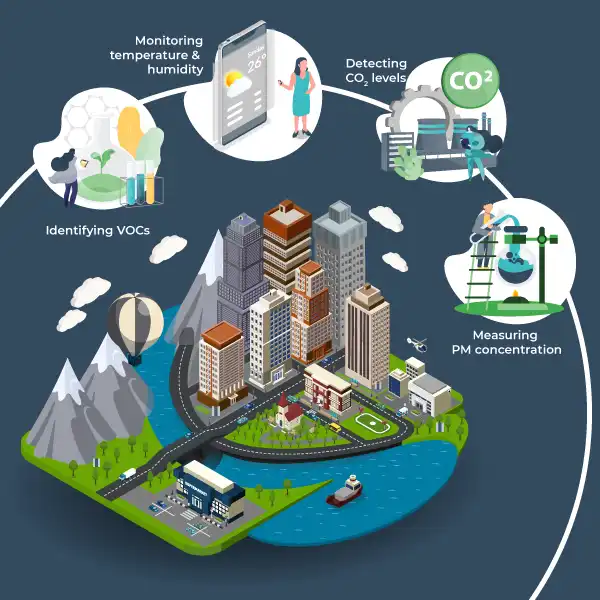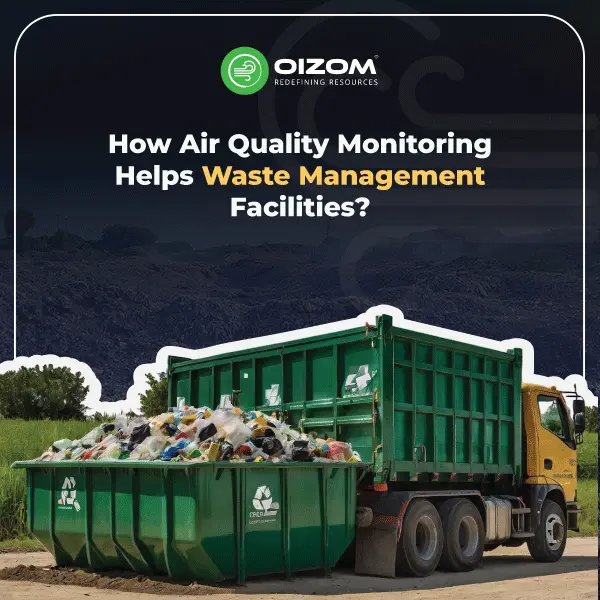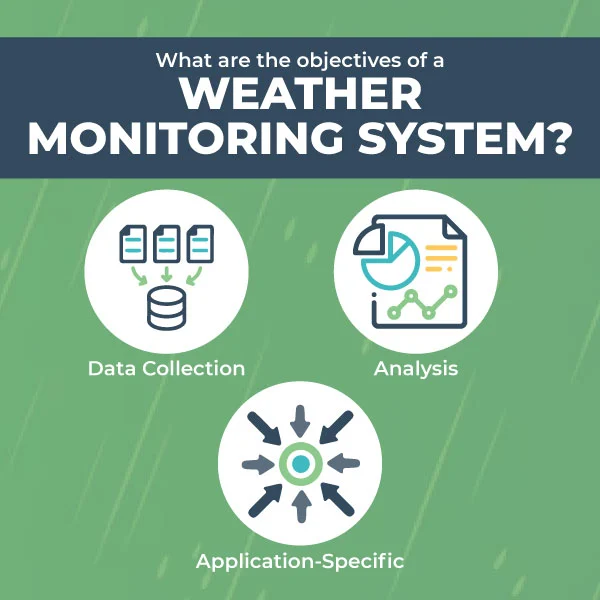With the dramatic urbanisation observed in the last century and the subsequent industrial activities, our air quality has witnessed palpable degradation. Though these changes remain invisible for many, the repercussions on our health are undeniable. In this information age and technology, DIY air quality monitoring has emerged as a potent tool, allowing laymen, not just scientists, to gauge the air that sustains them. The following sections will explore this fascinating realm, exploring the available devices, techniques, and implications.
Choosing a DIY Air Quality Monitoring Device
Several types of monitoring devices are available when choosing an air quality monitoring device.
The air we breathe, though seemingly straightforward, is a cocktail of various elements and compounds. Understanding this mix requires specialized tools.
- Particulate Matter (PM) Sensors are fundamental in areas where air pollution is rampant. PM, especially PM2.5 and PM10, refers to tiny particles suspended in the air, so small that they can be inhaled deep into our lungs, leading to numerous respiratory complications. Monitoring PM concentration in one’s locality can offer insights into possible respiratory risks and the efficacy of air filters.
- Gas Sensors: While some gases, like oxygen, are life-sustaining, others, like carbon monoxide, can be lethal. Gas sensors, designed with precision, can detect various gases, including CO2, ozone, and volatile organic compounds (VOCs). Each gas has its implications – while CO2 concentration might hint at ventilation efficiency, VOCs can signal the presence of harmful off-gassing from household items.
- Meteorological Sensors: While not directly related to pollutants, meteorological sensors provide crucial data like temperature, humidity, wind speed and wind direction. When combined with pollutant readings, these metrics paint a fuller picture of the environment. For instance, low humidity and high particulate matter might suggest an imminent dust storm.
Factors to consider when selecting a device
Entering the world of air quality monitors can be overwhelming, given the myriad available devices. But choosing one is more than just about specs; it’s about real-world applicability.
- Accuracy and Precision: A monitor’s primary duty is to offer reliable readings. Ensure the selected device has been validated against gold-standard methods or reference monitors.
- Target Pollutants: Not every environment is the same. While someone living near a factory might be concerned about VOCs, another person near a motorway might be more worried about nitrous oxide emissions. Choose a device tailored to your specific concerns.
- Ease of Use and Calibration: A device requiring a Ph.D. isn’t ideal for most. Opt for something user-friendly. Also, over time, sensors can drift. Devices that can be easily recalibrated will offer prolonged accuracy.
Oizom’s real-time air quality monitors are easy to use and provide accurate data on dust and gaseous pollutants. Check out more information on these robust air quality monitors here.
Cost-effective options for different budgets
Financial considerations play a crucial role in most purchase decisions. Fortunately, the air quality monitoring domain caters to a broad financial spectrum.
- Budget Monitors: For the keen novice, there are devices that, while lacking the bells and whistles of the high-end models, provide reliable readings for basic metrics like PM2.5.
- Mid-Range Monitors: Brands like Oizom offer devices that balance affordability and performance harmoniously. Known for their meticulous engineering and user-centric designs, Oizom monitors cater to both amateurs and professionals seeking in-depth environmental insights without breaking the bank.
DIY Techniques for Indoor Air Quality Monitoring
Monitoring temperature and humidity
Temperature and humidity aren’t just numbers on a screen; they’re indicators of comfort, well-being, and health. A balanced indoor environment is key for more than just comfort—it can be a barrier against various health threats.
- Importance: Elevated humidity levels can expedite mould growth, which releases spores and compounds that can exacerbate respiratory conditions. Conversely, an excessively dry environment can irritate mucous membranes, increasing susceptibility to respiratory infections.
- Tools: Digital Thermo hygrometers are invaluable for this purpose. Integrated into many smart home systems, these devices provide constant updates and can even alert homeowners when values stray beyond the desired range.
Detecting carbon dioxide (CO2) levels
In a world where energy efficiency is paramount, homes and offices are being sealed tighter than ever. But with fewer air exchanges come some challenges.
- Understanding CO2 Buildup: Elevated indoor CO2 levels, though not immediately toxic, can cause headaches, fatigue, and cognitive sluggishness. Also, high CO2 often indicates poor ventilation, which means other pollutants could accumulate.
- CO2 Monitors: These devices are relatively straightforward and can be integrated into broader air quality monitoring systems. Their readings can guide actions such as opening a window or turning on an extractor fan.
Measuring particulate matter (PM) concentration
The invisible cloud of particles that we often unwittingly inhale can be a source of significant health concern.
- Indoor Sources: Activities like cooking, burning candles, or even the simple act of walking (which resuspends floor dust) can elevate PM levels. Recognizing the activities that spike PM levels in one’s home can inform behavior and home maintenance.
- PM Detectors: Handheld or stationary, these detectors gauge the PM concentration in the air. When paired with smart home systems, they can even activate air purifiers during periods of elevated PM.
Identifying volatile organic compounds (VOCs)
Our homes, despite being sanctuaries, can sometimes be sources of invisible threats. VOCs from products like paints, aerosols, and even some furnishings can accumulate in poorly ventilated homes.
- The Threat of VOCs: From simple irritation of the eyes and throat to more serious organ damage with prolonged exposure, VOCs are not to be ignored. They can also react with other indoor air constituents, producing secondary pollutants.
- VOC Detectors: These electronic noses sniff out the concentration of VOCs in your environment. Understanding the sources can lead to actionable steps, like choosing VOC-free paint or ensuring ample ventilation when using certain products.
DIY Techniques for Outdoor Air Quality Monitoring Building a low-cost air quality sensor
In the realm of DIY, the joy often comes from building, tweaking, and perfecting one’s systems.
- Open-source Platforms: With platforms like Arduino and Raspberry Pi, the creation of customised air quality sensors has been democratised. One can build a device suited to specific needs with many sensors available.
- Community Forums: Online platforms are awash with enthusiasts sharing their designs, successes, and even failures, providing a rich tapestry of knowledge for newcomers.
Collecting and analysing data with open-source platforms
Gathering data is just the first step; making sense of it is where the real magic lies.
- Visualisation Tools: Platforms like Luftdaten or ThingSpeak don’t just aggregate data; they allow for graphical visualisation, trend analysis, and even predictions. By identifying patterns, one can recognise pollution hotspots or times of day when air quality dips.
- Sharing and Collaborating: One of the strengths of these platforms is the sense of community. A richer and more detailed picture of air quality emerges by pooling data from various users.
Collaborative citizen science initiatives:
There’s power in numbers. When communities come together, the resultant data can drive real change.
- Community-led Initiatives: In many cities, groups of concerned citizens have come together to monitor air quality, especially in places where governmental monitoring is scant or non-existent.
- Driving Change: Amassed data isn’t just for personal edification. It can be presented to policymakers, driving legislative changes or influencing urban planning decisions.
Data Interpretation and Analysis:
Reading numbers off a monitor is one thing; understanding what they mean in a broader context is another. For your DIY air quality monitoring endeavor to be genuinely effective, you must interpret your data correctly.
Context is Key:
Air quality varies considerably based on several factors: weather, time of day, season, and human activities. For example, PM levels might rise during morning rush hour but dip in the afternoon, only to spike during the evening commute. Recognising these patterns helps you understand the sources and dynamics of pollution in your area.
Historical Comparisons:
By comparing your data with historical figures, you can determine if air quality is improving, remaining stagnant, or deteriorating. Oizom’s devices, for instance, offer robust data storage capabilities, allowing you to assess long-term trends effortlessly.
Integrative Analysis:
Examining a single pollutant in isolation might not offer a complete picture. For instance, high VOCs combined with elevated ozone levels can hint at photochemical reactions taking place. Learning to see the synergies and connections between different pollutants can be illuminating.
Taking Action Based on Air Quality Data
Monitoring is but the first step. The real value of your efforts becomes palpable when you act upon your findings.
Home Improvements:
If you continually detect high PM levels indoors, it might be time to invest in an air purifier. Elevated indoor CO2 readings? Perhaps you need better ventilation or more frequent air exchanges.
Behavioral Changes:
Discovering that VOCs spike after you’ve painted a room or used a specific cleaning agent can guide future product choices. Similarly, if outdoor air quality is consistently poor during certain hours, you might choose to exercise indoors or reschedule outdoor activities.
Community Mobilisation:
Pooling data with neighbours or community members can lead to collective action. Perhaps it’s a petition for better emissions controls at a local factory or advocating for cleaner public transport options.
Ensuring Accuracy and Calibration of DIY Devices
Every tool has its limitations, no matter how sophisticated. Understanding and acknowledging these can help you ensure the ongoing reliability of your readings.
Routine Calibration:
Sensors can drift from their baseline over time, affecting accuracy. Brands like Oizom often provide calibration kits or instructions to recalibrate your device, ensuring continued precision.
Cross-referencing:
Comparing your readings with official data from environmental agencies or other users in your area can provide a benchmark for your measurements.
Maintenance:
Keeping your device clean and sheltered from extreme conditions can prolong its lifespan and ensure consistent results. Periodically checking for firmware or software updates is also crucial as manufacturers continually refine their algorithms and software for better accuracy.
DIY Air Quality Monitoring for Specific Settings
Different environments present unique challenges and considerations. Tailoring your monitoring approach based on the setting can yield more insightful data.
Schools and educational institutions:
Children, with their developing respiratory systems, are particularly vulnerable to poor air quality. Monitoring CO2 can help gauge classroom ventilation, while PM sensors can detect outdoor pollutants that might infiltrate indoor spaces during playtime or sports activities.
Workplaces and offices:
With adults spending a significant portion of their day at work, ensuring good indoor air quality is crucial. Beyond the health implications, there’s a productivity angle too. High CO2 concentrations, for instance, have been linked to reduced cognitive performance.
Homes and residential areas:
From cooking and cleaning activities to the materials our homes are made of, residential spaces can be hotspots for various pollutants. Routine monitoring can guide home improvement decisions, like opting for VOC-free paints or investing in better ventilation.
Outdoor recreational areas:
Parks, playgrounds, and other open spaces are meant for relaxation and rejuvenation. However, their proximity to roads or industries can affect air quality. Monitoring these spaces can inform city planning decisions or guide community actions.
Conclusion
In an age where data drives decisions, DIY air quality monitoring is a powerful tool for environmentalists and every individual. The very act of monitoring, of being in sync with one’s environment, fosters a connection and a deeper understanding of the intricate web of life. Air quality monitors by Oizom, democratise this knowledge, ensuring that it isn’t exclusive to scientists but accessible to all. Armed with data, we can make informed decisions, advocate for cleaner policies, and ensure that the air we breathe, the very essence of life, remains pure and invigorating.
Contact us today for an elaborative understanding of how Oizom’s air quality monitors can help you keep the air around you clean.






